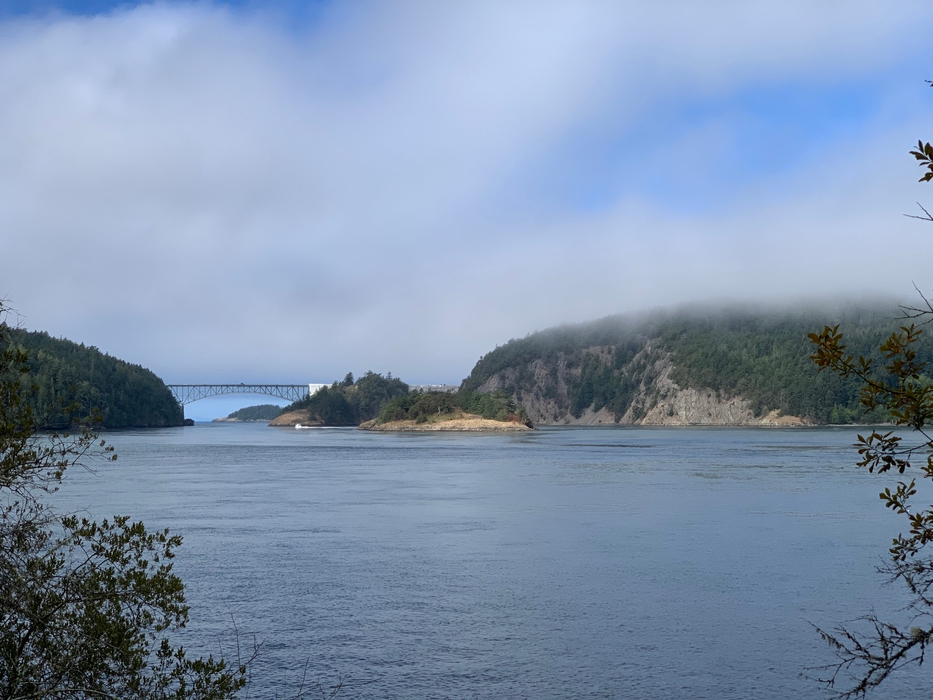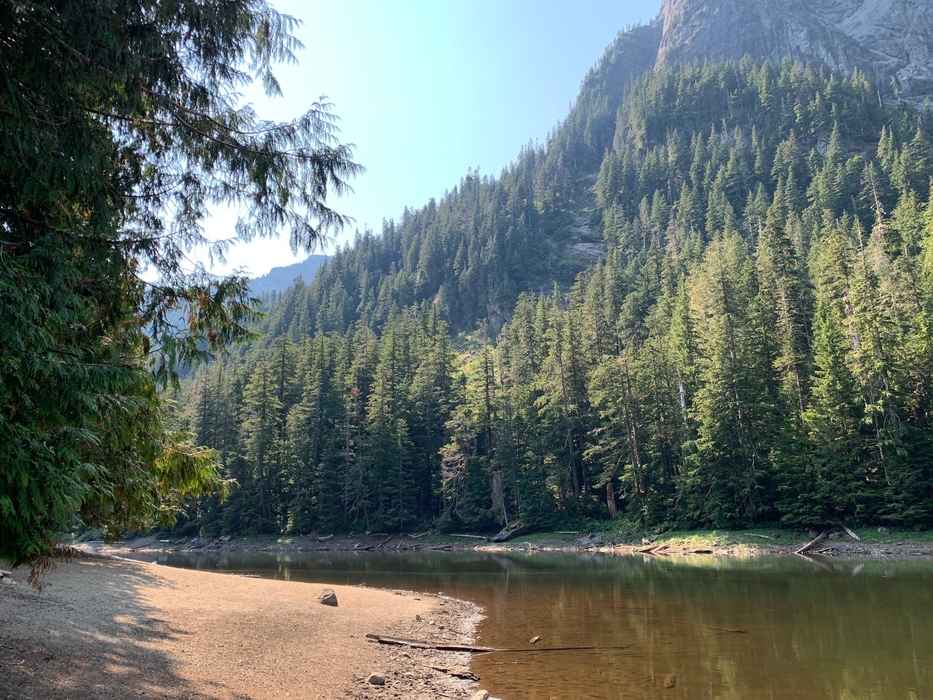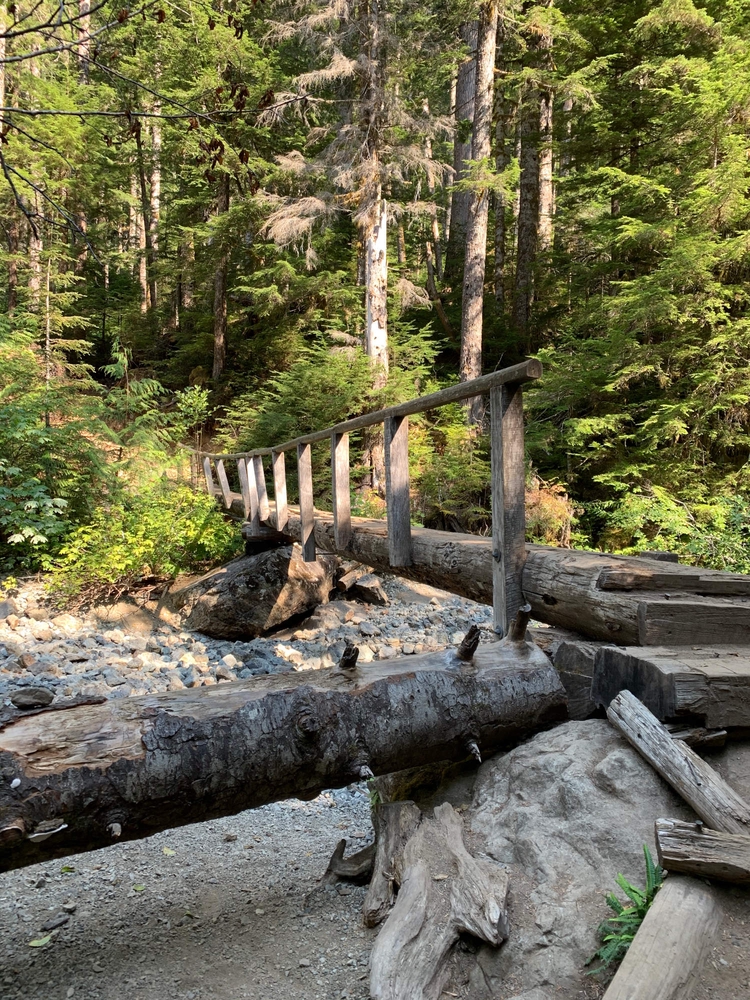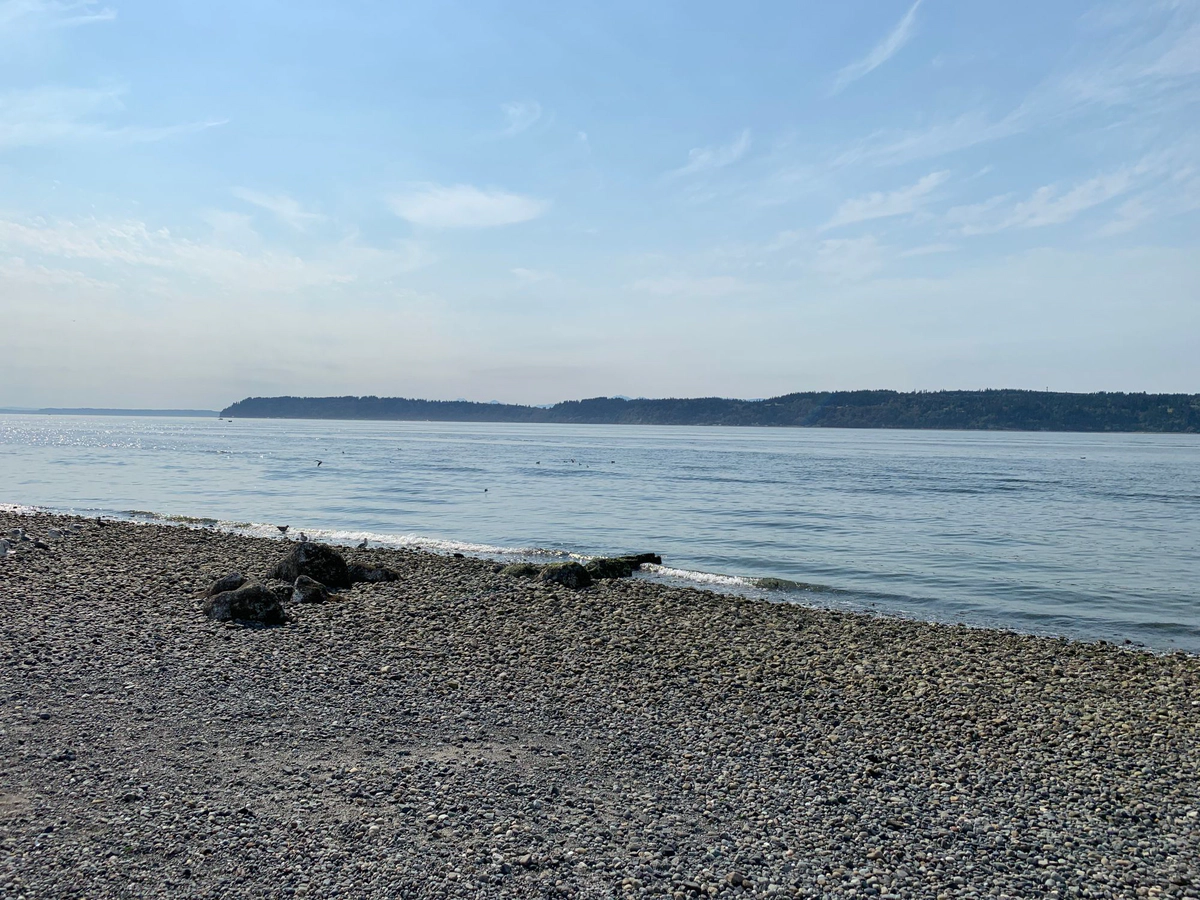Hikes
I haven’t really taken any vacation days since I started working last August (happy work anniversary to me!). Of course, there were planned vacations, but then 2020 happened. With summer coming to a close, I decided to take a few Fridays off to go hiking.

Deception Pass, WA
Our first hike was at Deception Pass, a State Park on Whidbey and Fidalgo Islands. We got lucky with weather, and had a pleasant day hiking through the woods and sitting on a beach. (The clouds in the above photo burned off quickly.)
The second hike I went on was in Central Washington in the Mt. Baker-Snoqualmie National Forest.

Barclay Lake, WA
I’d never hiked to Barclay Lake before, and it was also quite a nice hike. We lucked out again with weather, but this trail had a bunch of insects, so that was a mixed blessing. Still, the lake was a great venue for a quick picnic and some nature photography.

I’ve lived in Washington for >15 years, and there’s still so much of the Pacific Northwest that I haven’t seen yet. The Washington Trail Association has a really comprehensive website of hiking trails, and AllTrails also looks to be a good source (though, many of the trails seem to be user-contributed, so YMMV).
Hiking during COVID is slightly strange, but not any stranger than other outdoor activities. Fortunately, neither of the trails we hiked were crowded, but I specifically planned the hikes on weekdays to avoid high-traffic times. All things considered, I imagine hiking is still a relatively low-risk activity.
Modeling Risk: microCOVIDs
Speaking of risk, one of the best things I’ve read in the last few weeks was this post on Interconnected about microCOVIDs as a unit of measuring and modeling risk:
There’s a standard way to understand the relative danger of any activity. A micromort is a unit of risk defined as one-in-a-million chance of death (Wikipedia).
…
Assuming a 1% mortality risk, being infected with Covid-19 is 10,000 micromorts. But what about the risk of catching Covid in the first place? The microCOVID project: 1 microCOVID = a one-in-a-million chance of getting COVID.
There’s a calculator for regular activities (try it!) from which I can see that
- going out to buy groceries is 20 microCOVIDs
- having a small party, indoors, with no masks is 3,000 microCOVIDs
- a 30 minute commute on the train is 100-200 microCOVIDs
One of my favorite thought technologies that I’ve encountered during the pandemic is the idea that risk is something that can be budgeted. This project, which attempts to create a quantifiable unit of risk, seems like a good step in getting broader acceptance of this idea. I think risk budgeting encodes two concepts quite well: First, different activities incur differing transmission risks (i.e. “costs”). Second, different groups of people have different tolerances for risk (i.e. “budgets) – for example, if you’re part of a vulnerable population, your risk tolerance will naturally be lower.
The microCOVID project also takes this a step further by trying to incorporate one’s location (a proxy for community prevalence) into risk calculations. For example, a 60 minute grocery shopping trip in Washington is ~20 microCOVIDs, whereas the same activity in South Carolina is ~100 microCOVIDs.
I’m not sure of the epidemiological veracity of this model, but I appreciate it at an intuitive level.
One issue with the microCOVID project, which is also discussed in the Interconnected article, is the implicit assumption that calculations of risk are personal. The decision to go to a bar is personal, but the decision to allow bars to be open at all is a collective political decision. The decision to have a high risk budget affects not only me, but the others that I infect if I get unlucky and contract the virus.
We need two levels of risk budgeting: the personal and the collective. For example, I would argue that we collectively wasted some of our budget on reopening restaurants and bars, when we could have “spent” that risk on safer reopening of schools.
Smoke on the Horizon
I’ve been crossing my fingers that we’d make it through the 2020 dry season without any wildfires in the Pacific Northwest but, alas, 2020 strikes again: “Wildfire smoke blows into Seattle area; fires burn east and west of mountains” (Seattle Times).
Wake up and smell the _____:
— Ben Congdon (@benrcongdon) September 8, 2020
- ❎ Roses
- ✅ Coffee
- ✅ Wildfires
A few nights ago, the wildfire smoke rolled in and we experienced a surreal orange sunset. The air was thick in an unpleasant way, which made it difficult to do anything outside.
Seattle (so far) has gotten a mild dose of smoke, nothing like the Bladerunner-esque orange skies that San Francisco has been seeing, or the apocalyptic red skies haunting parts of Oregon. Seeing those reminded me of my time living in San Francisco in the summer of 2018, when we got similarly (though not quite as intense) orange skies due to wildfire smoke.

San Francisco (2018)
That being said, even when the sky isn’t orange, the smoke can get bad enough that it’s unpleasant to be outside for long periods of time, and unhealthy to exercise outdoors. Regular walks and spending time outside has a big positive impact on my mental health, so I’m hoping that this year’s wildfire season is brief.
Fortunately, the (noticeable) smoke has subsided here in Washington. The air quality is still measurably bad, but beyond a light haze and slight smell, things are normal-ish again. 🤞
Assorted Links
-
BostonPy: Simon Willison, Datasette and Dogsheep
-
I’ve been following Simon Willison’s Datasette project since I learned of it in late 2019. Simon has made a heroic amount of progress on the project this year, and this is a pretty good summary of the current state of Datasette/Dogsheep. For the uninitiated, Datasette is a tool for exploring/publishing data on the web, and Dogsheep builds on Datasette to allow you to create a personal data warehouse. It’s also being used for data journalism. Really cool stuff, IMO.
-
-
My AI Timelines Have Sped Up - Interesting post about how the tooling behind creating AI is an important driver of progress, as is the compute resources used to train/serve ML models.
If you asked 2015-me how we’d build AGI, I’d tell you I have no earthly idea. I didn’t feel like we had meaningful in-roads on any of the challenges I’d associate with human-level intelligence. If you ask 2020-me how we’d build AGI, I still see a lot of gaps, but I have some idea how it could happen, assuming you get lucky. That’s been the biggest shift for me.
-
Chindōgu (Wikipedia)
Chindōgu (珍道具) originates from Japan and is done by a person seemingly inventing ingenious everyday gadgets that seem like an ideal solution to a particular problem, but in fact cause more problems than it solves.
